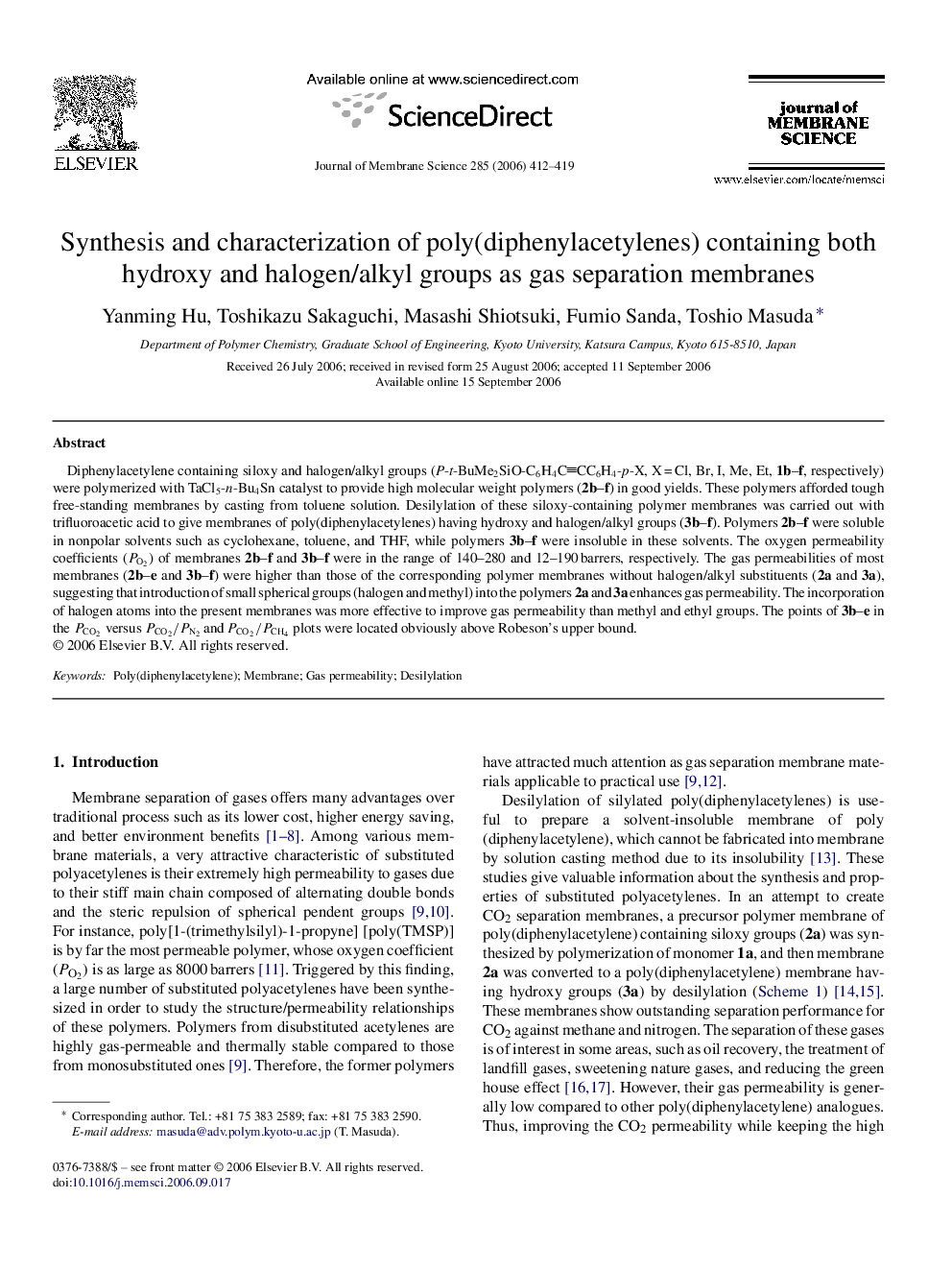| Article ID | Journal | Published Year | Pages | File Type |
|---|---|---|---|---|
| 639114 | Journal of Membrane Science | 2006 | 8 Pages |
Diphenylacetylene containing siloxy and halogen/alkyl groups (P-t-BuMe2SiO-C6H4CCC6H4-p-X, X = Cl, Br, I, Me, Et, 1b–f, respectively) were polymerized with TaCl5-n-Bu4Sn catalyst to provide high molecular weight polymers (2b–f) in good yields. These polymers afforded tough free-standing membranes by casting from toluene solution. Desilylation of these siloxy-containing polymer membranes was carried out with trifluoroacetic acid to give membranes of poly(diphenylacetylenes) having hydroxy and halogen/alkyl groups (3b–f). Polymers 2b–f were soluble in nonpolar solvents such as cyclohexane, toluene, and THF, while polymers 3b–f were insoluble in these solvents. The oxygen permeability coefficients (PO2PO2) of membranes 2b–f and 3b–f were in the range of 140–280 and 12–190 barrers, respectively. The gas permeabilities of most membranes (2b–e and 3b–f) were higher than those of the corresponding polymer membranes without halogen/alkyl substituents (2a and 3a), suggesting that introduction of small spherical groups (halogen and methyl) into the polymers 2a and 3a enhances gas permeability. The incorporation of halogen atoms into the present membranes was more effective to improve gas permeability than methyl and ethyl groups. The points of 3b–e in the PCO2PCO2 versus PCO2/PN2 and PCO2/PCH4PCO2/PN2 and PCO2/PCH4 plots were located obviously above Robeson's upper bound.
